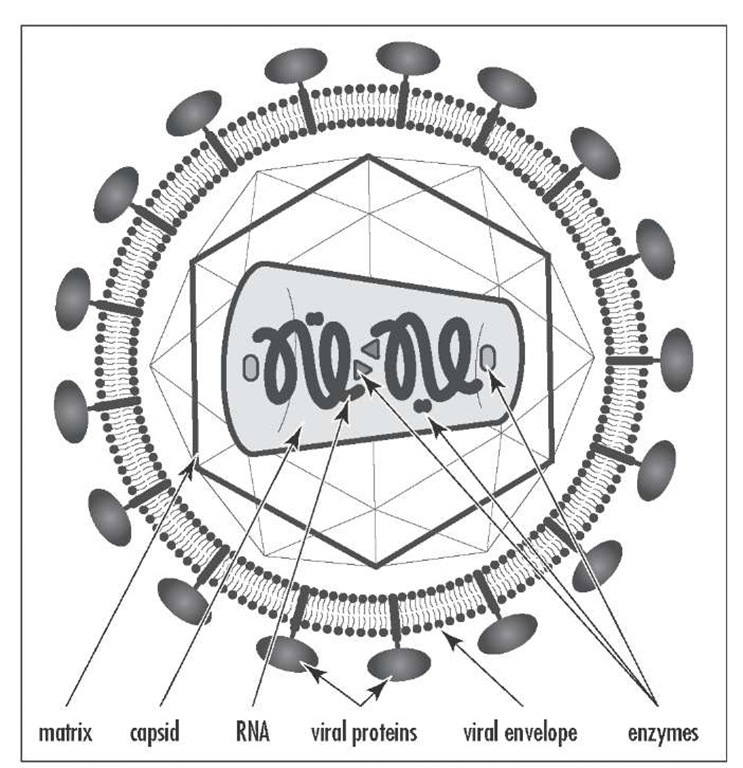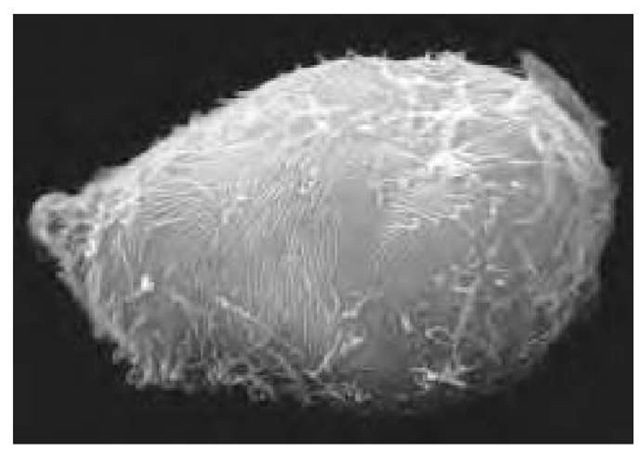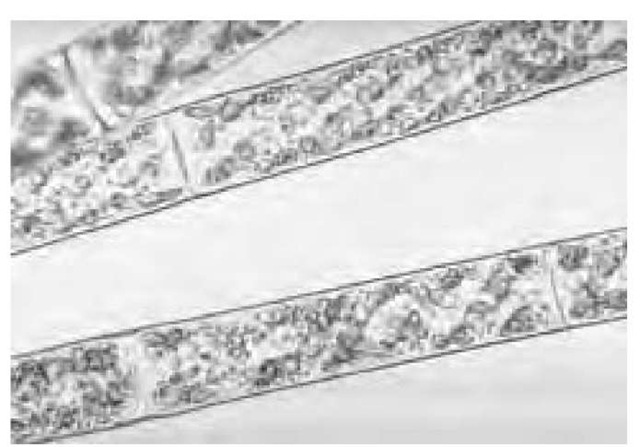Aerobic Any organism, environmental condition, or cellular process that requires atmospheric oxygen. Aerobic microorganisms, called aerobes, require the presence of oxygen for growth. An aerobe is capable of using oxygen as a terminal electron acceptor and can tolerate oxygen levels higher than that present in the air (21 percent oxygen). They have a respiratory type of metabolism, and some aerobes are also capable of growing anaerobically with electron accepters other than oxygen.
Affinity The tendency of a molecule to associate with another. The affinity of a drug is its ability to bind to its biological target (receptor, enzyme, transport system, etc.). For pharmacological receptors, it can be thought of as the frequency with which the drug, when brought into the proximity of a receptor by diffusion, will reside at a position of minimum free energy within the force field of that receptor.
For an agonist (or for an antagonist), the numerical representation of affinity is the reciprocal of the equilibrium dissociation constant of the ligand-receptor complex, denoted KA, calculated as the rate constant for offset (fe-1) divided by the rate constant for onset (k1).
Age structure The relative number of individuals of each age in a population, or the composition of a country by age groups. Since generations coexist over a time period, an age structure develops and is important in foreseeing the growth rate of an entire population. Except for the "baby boom" generation of the late 1940s-50s, the United States has a pretty even age distribution.
Agnatha A superclass family of jawless vertebrate fish that probably originated during the late Precambri-an or early Cambrian. This superclass is the source of the oldest vertebrate fossils, dating some 465 million years ago during the Paleozoic era. Early agnathans, such as the now extinct ostracoderms, were encased in bony plates. While most were small, no larger than 20 in., they lacked paired fins and had circular mouths or slits with no jaws, although there were exceptions that had paired fins. Agnathans were most likely bottom-dwelling mud suckers or suspension feeders, taking in food through the mouth and then trapped in the gill, which also functioned as the area for gas exchange.
Only about 60 species comprising two classes of agnathans exist today, while the rest declined and disappeared during the Devonian period. Two classes, the Myxini (hagfishes) and Cephalaspidormorphi (lampreys), are all that remain.
Both hagfishes and lampreys lack paired appendages and lack body armor. Hagfishes are scavengers, living only in salt water and feeding on dead fish or marine worms, and lack a larval stage. Lampreys use their round mouth and a rasping tongue to latch on the side of a fish, penetrate the skin, and ingest its blood. As larvae, they live in freshwater streams, are suspension feeders, and migrate to the sea and lakes when they become adults. Some species only feed while in the larval stage, reproduce, and die. The agnathans are considered the most primitive living vertebrates known today.
Agonist An endogenous substance or a drug that can interact with a receptor and initiate a physiological or a pharmacological response characteristic of that receptor (contraction, relaxation, secretion, enzyme activation, etc.).
Agonistic behavior This behavior usually involves two animals in a competitive contest, which can be in the form of combat, threat, or ritual, for food, a sexual partner, or other need. The end result is one becoming a victor while the other surrenders or becomes submissive, both exhibiting different traits. When one surrenders, it stops the combat because the continued battle could end up injuring both. Likewise, any future combat between the two individuals will likely end with the same result as the first and will not last as long.
Many animal social groups are maintained by agonistic behavior where one individual becomes dominant, others become subdominant, and so on down the line, each controlling the others in a dominance hierarchy or "pecking order." This dominant behavior can be used to control access to food or mates. Chickens, gorillas, and wolves are good examples of social groups maintained by dominance.
Agonistic behavior is used to defend territories, areas that a dominant individual will defend for feeding, mating, rearing, or any combination of these activities.
AIDS (acquired immunodeficiency syndrome) AIDS is the name given to the late stages of HIV infection, first discovered in 1981 in Los Angeles, California. By 1983 the retrovirus responsible for it, the human immunodeficiency virus (HIV), was first described, and since then millions around the world have died from contracting the disease. It is thought to have originated in central Africa from monkeys or to have developed from contaminated vaccines used in the world’s first mass immunization for polio.
AIDS is acquired mostly by sexual contact either through homo- or heterosexual practice by having unprotected sex via vaginal or anal intercourse. The routes of infection include infected blood, semen, and vaginal fluid. The virus can also be transmitted by blood by-products, through maternofetal infection (where the virus is transmitted by an infected mother to the unborn child in the uterus), or by maternal blood during parturition, or by breast milk consumption upon birth. Intravenous drug abuse also is a cause.
The virus destroys a subgroup of lymphocytes, essential for combating infections, known as the helper T cells, or CD4 lymphocytes, and suppresses the body’s immune system, leaving it prone to infection.
Infection by the virus produces antibodies, but not all those exposed develop chronic infection. For those that do, AIDS or AIDS-related complex (ARC) bring on a variety of ailments involving the lymph nodes, intermittent fever, loss of weight, diarrheas, fatigue, pneumonia, and tumors. A person infected, known as HIV-positive, can remain disease-free for up to 10 years, as the virus can remain dormant before fullblown AIDS develops.
While HIV has been isolated from bodily fluids such as semen to breast milk, the virus does not survive outside the body, and it is considered highly unlikely that ordinary social contact can spread the disease. However, the medical profession has developed high standards to deal with handling blood, blood products, and body fluids from HIV-infected people.
In the early discovery stage of the disease, AIDS was almost certainly fatal, but the development of antiviral drugs, such as zidovudine (AZT), didanosine (ddl), zalcitabine (ddc), lamivudine (3TC), stavudine (DAT), and protease inhibitors used in combination with the others, has showed promise in slowing or eradicating the disease. Initial problems with finding a cure have to do with the fact that glycoproteins encasing the virus display a great deal of variability in their amino acid sequences, making it difficult to prepare a specific AIDS vaccine.
During the 1980s and 1990s, an AIDS epidemic brought considerable media coverage to the disease, especially as well-known celebrities such as actors Rock Hudson and Anthony Perkins, Liberace, and others died from it. Hudson was the first to admit having the disease in 1985. During the 1980s and 1990s, the homosexual community became active in lobbying for funds to study the disease, as it early on was considered simply a "gay" disease. ACT UP, acronym for the AIDS Coalition to Unleash Power, began as a grassroots AIDS organization associated with nonviolent civil disobedience in 1987. ACT UP became the standard-bearer for protest against governmental and societal indifference to the AIDS epidemic. Public attitude changed when heterosexuals became infected, and greater education on the causes of the disease became more widespread, initiated by celebrities such as Elizabeth Taylor and the American Foundation for AIDS Research, where fundraising activities made national news coverage.
AIDS was first reported in 1981 in the United States and has since become a major epidemic, killing nearly 12 million people and infecting more than 30 million others worldwide. The disease is caused by HIV, a virus that destroys the body’s ability to fight infections and certain cancers.
HIV-infected white blood cell. Scanning electron micrograph (SEM) of the abnormal surface of a white blood cell infected with HIV virus that causes AIDS. Glycosaminoglycan (GAG) gene expression for cell surface proteins is abnormal. The HIV virus’s genetic material controls the cell, forcing it to express abnormal structural proteins. Normally these surface GAG proteins are tiny spheres, but here the cell’s outer surface is formed from large irregular rods. HIV causes AIDS (acquired immunodeficiency syndrome). AIDS destroys white blood cells, leading to a weakened immune system. Magnification: x 6600 at 4.5 x 5.5 inch size.
There have been significant advances in the treatment for HIV/AIDS by attacking the virus itself, strengthening the immune system, and controlling AIDS-related cancers and opportunistic infections. At present, there is still no cure or vaccine.
Albumin A type of protein, especially a protein of blood plasma, that transports various substances, including metal ions, drugs, and xenobiotics.
Aldehydes Aldehydes are organic chemicals that contain the -CHO (aldehyde) group, a carbonyl group (C=O) that has the carbon and hydrogen atom bound.
They are the result of the oxidation of alcohols and, when further oxidized, form carboxylic acids. Methanal (formaldehyde) and ethanal (acetaldehyde) are common examples.
Aldosterone An adrenal steroid hormone, derived from cholesterol, that is secreted by the adrenal cortex and acts on the distal tubules of the kidney to control the elimination of salts and water by the kidneys. The presence of the pituitary hormone ACTH, changing levels of sodium and potassium, and variations in blood volume stimulate the production of aldosterone by the cortex.
Aldosterone is a component of the rennin-angiotensin-aldosterone system (RAAS) that is a complex feedback system that functions in homeostasis.
Algae (singular, alga) A large and diverse group of photosynthetic organisms formerly called simple plants but now members of their own phyla, the Protoctista, that also includes the slime molds and protozoa. Algae, some 17,000 species or more, live in aquatic and moist inland regions. They do not have roots, stems, or leaves and have no vascular water-conducting systems. They reproduce by spores, and in some species the spores are mobile with the use of flagella. They range from simple single cells (e.g., Euglena) to "plants" many feet long (e.g., kelps such as Macrocytis) and make up marine seaweed and much of the plankton that provide food for other species.
Unusual growth outbursts result in "algal blooms" or "red tides" and occur when there is an increase in nutrient levels in a body of water.
Cyanophyta, or blue-green algae, are now classified as cyanobacteria. The phylum Cyanophyta also includes chloroxybacteria. Cyanophytes contain phyco-cyanin, a photosynthetic pigment giving them a blue color. The red pigment phycoerythrin is also almost always present. They are diverse and can live as single cells or as colonies or large filaments. Some are nitrogen fixers in soil and others, like lichens, display symbiosis with a fungus, usually with a member of Ascomycota. The fungus provides the host plant for the algae cells that are distributed throughout and provide food to the fungus while the fungus protects the algae cells. While many lichen have a different fungi component, they often have the same algae species. Some common species of lichens are British soldiers (Clado-nia cristatella), pixie cups (Cladonia grayi), cedar lichen (Vulpicidia viridis), wrinkled shield lichen (Flavoparmelia caperata), and reindeer lichen (Cladina subtenuis).
The chloroxybacteria, or green-grass bacteria, contain both chlorophylls a and b but do not contain the red or blue pigments of the blue-green algae. They are nonmotile, aerobic organisms.
Other phyla of algae include the Bacillariophyceae, comprising the diatoms; Charophyceae, fresh- or brackish- water algae that resemble bryophytes; Chlorophyceae, or green algae believed to be the progenitor of plants; Chrysophyceae, or yellow-green algae; Dinophyceae, unicellular algae with two flagella; Phaeophyceae, or brown algae; and Rhodophyceae, or red algae.
The Bacillariophyceae or diatoms are unicellular algae that are found in single, colonial, or filamentous states. Under the microscope they often are beautifully symmetrical, as their cell walls, or frustules, are composed of silica and are bivalved, one of which overlaps the other, and the frustule is often punctated and ornamented. The two orders, Centrales and Pennales, occupy two different environments. The centric diatoms (Centrales) are circular in shape with radial symmetry and live mostly in marine environments. The pennate diatoms (Pennales) are elliptical in shape, have bilateral symmetry, and are found in freshwater environments.
Deposits of fossil diatoms known as diatomaceous earth have been mined and used for years in paints, abrasives, and other products such as chalk. The famous White Cliffs of Dover in England (rising to 300 feet) are composed of massive amounts of diatoms— coccoliths—that were laid down some 790 million years ago when Great Britain was submerged by a shallow sea.
The Charophyceae, also known as stoneworts, and which resemble bryophytes, live in fresh and brackish water especially rich in calcium, where they become stiff and lime encrusted. The stoneworts consist of a complex branched thallus with an erect stemlike structure and many whorls of short branches.
The Chlorophyceae (or green algae) are the closest to plants in pigment composition and structure and are related based on a common ancestor. More than 7,000 species live in freshwater and marine environments as unicellular parts of plankton, in damp soil and even snow as colonies or filaments, symbiotically with other eukaryotes, or mutually with fungi as lichens.
The Chrysophyceae or golden algae, named because of their yellow and brown carotene and xan-thophyll pigments, are typically cells with two flagella at one end of the cell, and many live among freshwater and marine plankton. While most are unicellular, a few are colonial.
The Dinophyceae or dinoflagellates are algae that are unicellular with two flagella of unequal length contained in channels on the cell surface. They can change shape with different water temperatures and are very tolerant of chemical and physical conditions.
The Phaeophyceae or brown algae are the largest and most complex of the algae. All members are multi-cellular, and the majority live in marine environments, especially common in cool water along temperate coastlines. Many of the marine seaweeds are brown algae.
The Rhodophyceae or red algae are more recent and have lost their flagellate stages in their life cycle. Some species are actually black and not red, as those that live deeper in waters, because of different levels of the pigment phycoerythrin. While most are found in warm coastal waters of the tropical oceans, some also live in freshwater and on land in the soil. Most rhodophytes are multicellular, sharing seaweed status with brown algae.
Spirogyra is a filamentous algae that can be found in almost every pond or ditch.
Because the various forms of algae are now assigned to different phyla, the words alga and algae are used informally and have no taxonomic status.



